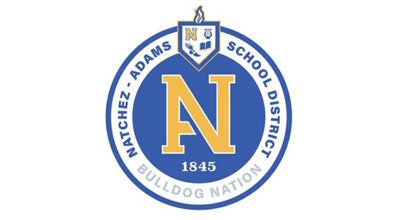Natchez surveyor wrote account of Civil War surrender
Published 12:01 am Thursday, April 9, 2015

Natchez surveyor Charles Babbit witnessed the surrender at Appomattox Courthouse in Virginia 150 years ago today. Babbit wrote about the account in his journals which were later transcribed. After the war, he returned to Natchez to survey and draft maps of Natchez and surrounding areas. (Illustration by Ben Hillyer / The Natchez Democrat)
NATCHEZ — Behind Hayden Kaiser Jr.’s office desk is a small booklet filled with the first-hand account of events that happened 150 years ago today.
The small unassuming gray cover belies the eloquent words written by Natchez surveyor Charles Babbit after he witnessed Gen. Robert E. Lee’s surrender to Gen. Ulysses S. Grant at Appomattox Courthouse in 1865.
“He wrote in long hand,” said Kaiser as he opened one of the many survey books kept in a glass case in a fire-safe vault at the offices of Jordan, Kaiser and Sessions Engineers.
The notebooks are just a small collection of nearly two centuries of field notes collected by the Natchez firm.
The notes were handed down from Babbit to his son J.W. Babb, who was also a surveyor and engineer. Proby Sessions acquired the notes when he worked with J.W. before partnering with Kaiser and Chandler Jordan in 1955.
“Mr. Sessions happened to go through Babbitt’s books and found the notes,” Kaiser said.
Sessions found the account to be so moving and important as a historical document that he had them transcribed.
“Many a head was drooped in sadness that the cause was lost and doomed, but still there was a feeling of relief when we reflected that we had done all that was in our power to do and that blood and carnage were at an end,” Babbit wrote in his account.
At the time of Lee’s surrender, Babbit was a 1st Lieutenant in the 1st Regiment Engineer Troops for the Army of Northern Virginia.
Babbit began surveying in Natchez before the Civil War. His field notes date back to 1861.
He stopped surveying when the war broke out and joined the Confederate Army.
“On the same evening (Lee) issued his farewell address, and when it was known that he had returned with his sword still at his side, and we had learned of the very liberal and hightoned manner in which he had been received by Gen. Grant and the terms of surrender granted to us through him, I assure you that many a bitter thought was burned into oblivion,” Babbit wrote.
Babbit continued to write about the atmosphere among troops following the surrender.
“Had you been present on that afternoon you could have not realized that two hostile armies had faced each other in the morning,” Babbit wrote. “The Blue and the Grey were seated around the camp fires smoking and chatting as socially as though they belonged to the same army.”
When Babbit returned to Natchez he would go on to create one of the most important collections of maps and survey of Natchez and the surrounding area.
If it wasn’t for Babbit much of the documentation historians use today would not exist, Historic Natchez Foundation Executive Director Mimi Miller said.
Like his detailed accounting of the Lee’s surrender, Babbit records a lot of details about plantation landscapes and life in Natchez before and after the war that wouldn’t be available, according to Miller.
Babbit’s last observations address a long-standing myth and repeated story about an apple tree reported to have existed at the Appotmattox Courthouse, but no one could find after the surrender.
He wrote, “As I passed the farm yard of the surrender, we stopped and took a farewell look. Groups of men were there with their axe and saw and spade. The apple tree was down by the roots and men were cutting and digging for dear life for a remnant and souvenir …”





